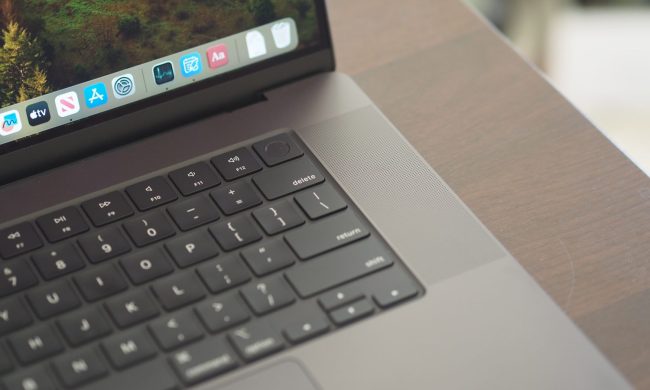
Think about the words and phrases on our computers that we type over and over again, without even thinking about it. Emails and site logins are just a few of these frequently keyed fields, but there are plenty others. Now what if we told you there was a neat shortcut on macOS that lets you automatically input repeated words? It’s a feature called text replacements, and it’s also available on iPhones and iPads.
Add text replacements on Mac
When you add new text replacements on your Mac, you can use them on your iPhone or iPad as well. Just make sure you’re signed in with the same Apple ID to sync the content.
Step 1: Open System preferences using the icon in your Dock or the Apple icon in the Menu bar.
Step 2: Select Keyboard.
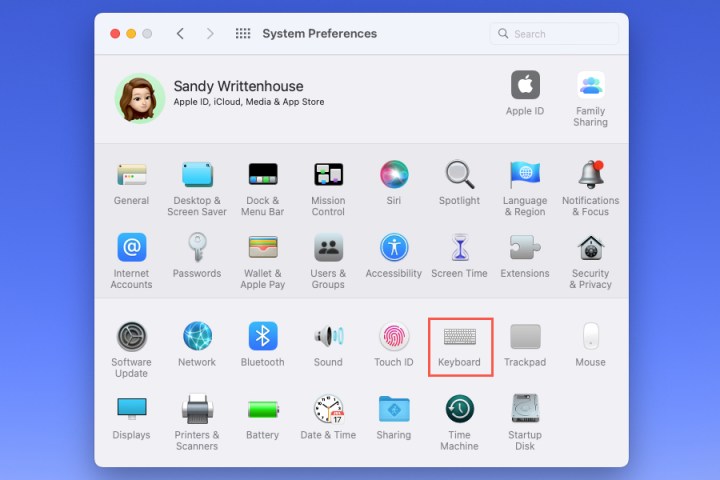
Step 3: Go to the Text tab. If you’re synced with your iPhone or iPad, you may see shortcuts you’ve added there.
Step 4: To add a replacement, select the Plus sign on the bottom left.
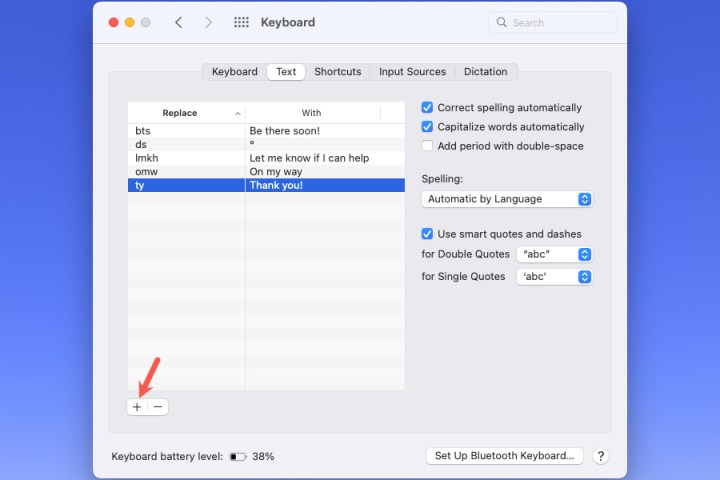
Step 5: Type the shortcut you want to use to replace the text in the box that opens.
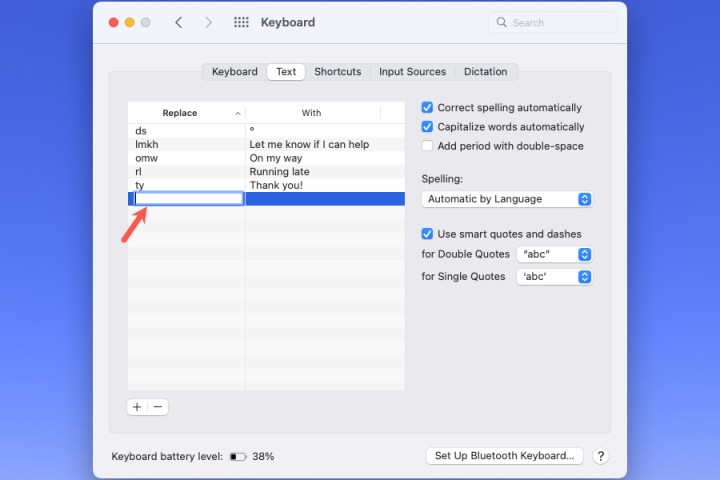
Step 6: Press your Tab key and then enter the text you want to display when you use the shortcut.
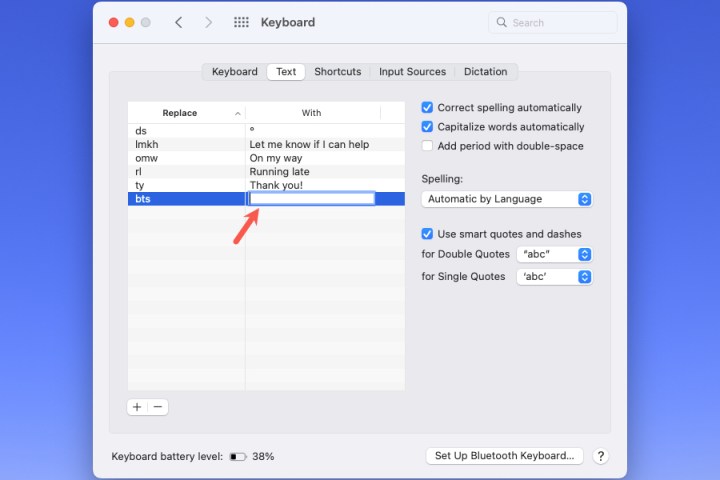
Step 7: Press your Return key to save the text replacement.
By default, your replacements are listed in alphabetical order according to the shortcut.
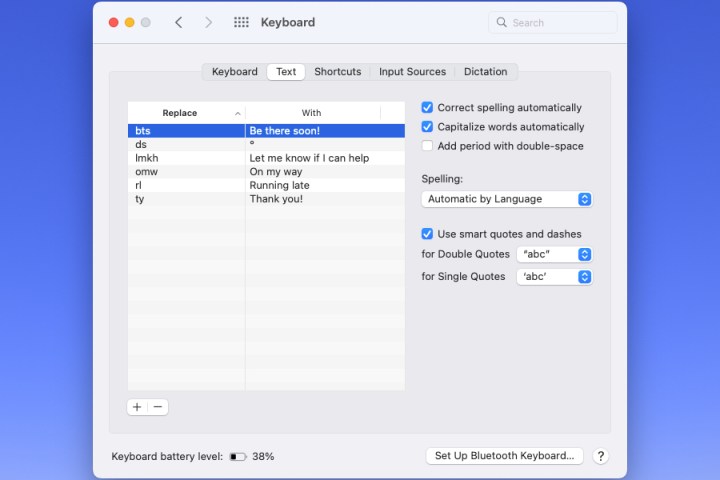
Use text replacements on Mac
When you want to use a text replacement, open your document, text message, email, note, or other item.
Step 1: Place your cursor where you want the string of text, and type the shortcut.
Step 2: You should see the replacement text pop-up box beneath the shortcut.
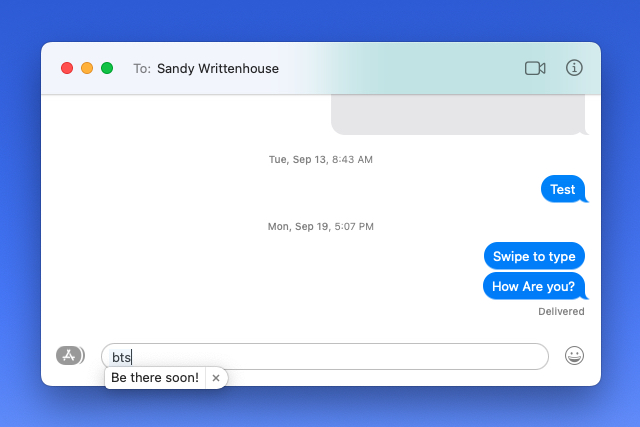
Step 3: You can then select that text, press Return, or use the Space bar to replace the shortcut with the text.
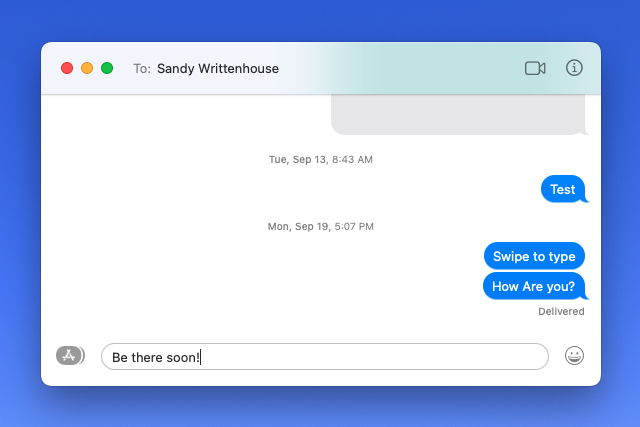
Step 4: If you don’t want to replace the shortcut with the string of text for some reason, select the X on the right side of the small pop-up box.

Edit or remove text replacements
You can change existing text replacements or remove those you don’t use.
Step 1: In System preferences > Keyboard, go to the Text tab.
Step 2: To edit a replacement, select it and enter the new shortcut or text you want to display. Then, press your Return key.

Step 3: To delete a replacement, select it in the list and use the Minus sign on the bottom left to remove it.
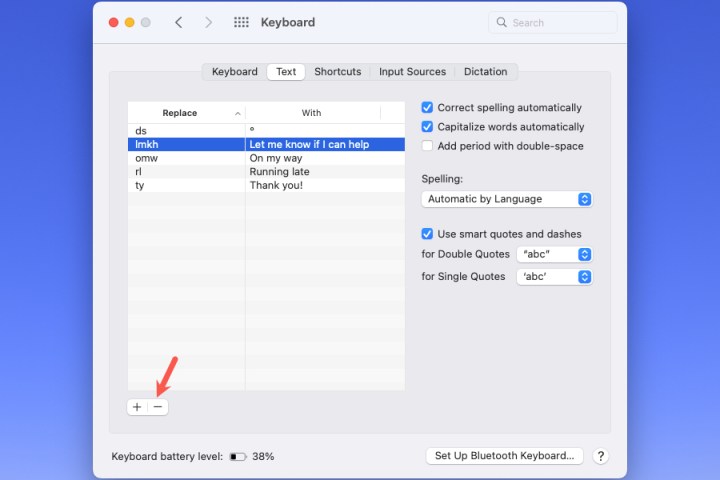
With text replacements on Mac, you can speed up what you want to type. For similar ways to work more productively, check out some of the best Mac keyboard shortcuts.



